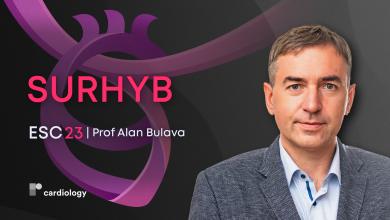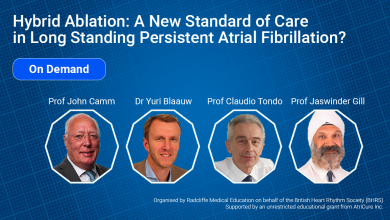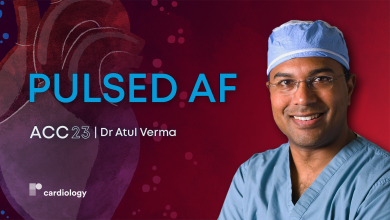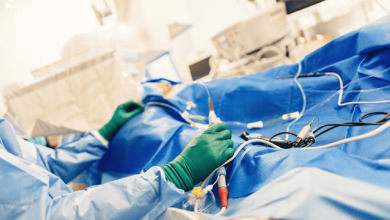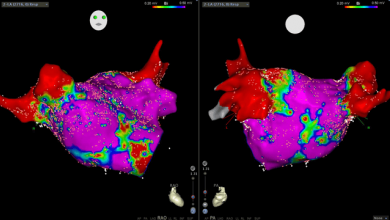Search results
ESC 23: The SurHyb Trial
Author(s):
Alan Bulava
Added:
7 months ago
Video
Author(s):
Jonathan S Steinberg
,
David Slotwiner
Added:
3 years ago
Electrical Remodelling
Evidence Supporting Atrial Remodelling
The concept of electrical remodelling was first introduced in 1995 simultaneously by Wijffels et al.1 and Morillo et al.2 who demonstrated that once sustained atrial fibrillation (AF) was induced in goats, or rapid atrial pacing was performed in dogs, physiological changes occurred that favoured the maintenance of AF.3 This led to the…
View more
Author(s):
Amir A Schricker
,
Junaid Zaman
,
Sanjiv M Narayan
Added:
3 years ago
Catheter ablation is more effective than pharmacological therapy for the secondary prevention of patients with paroxysmal1,2 and persistent3,4 atrial fibrillation (AF) and has an emerging role in the primary prevention of paroxysmal AF.5,6 Nevertheless, in randomised clinical trials (RCTs) its success in treating patients with paroxysmal AF is 40–60% for a single procedure and 70% for multiple…
View more
Author(s):
Karl-Heinz Kuck
,
Andreas Metzner
Added:
3 years ago
Catheter-based ablation of atrial fibrillation (AF) is an established treatment option for symptomatic patients who are refractory to drug-based treatment, as implemented in the latest guidelines for the management of AF.1 The accepted and recommended cornerstone of all ablation strategies for AF is electrical isolation of the pulmonary veins (PV).2 However, in addition to PV isolation (PVI),…
View more
Hybrid Ablation
Video Series
Author(s):
Atul Verma
Added:
1 year ago
ACC.23/WCC - Principal Investigator, DrAtul Verma (McGill University Health Centre, CA) joins us on-site at ACC's 2023 Scientific Sessions to outline the findings of the PULSED-AF Trial(Medtronic Cardiac Rhythm and Heart Failure) (NCT04198701).
In this prospective, multicenter study, 421 patients with persistent atrial fibrillation (AF) were treated with the Medtronic PulseSelect Pulsed Field…
View more
Author(s):
David DeLurgio
,
Jaswinder Gill
,
Syed Ahsan
,
et al
Added:
2 years ago
Author(s):
Lisa WM Leung
,
Zaki Akhtar
,
Jamal Hayat
,
et al
Added:
1 year ago
Author(s):
Marius Andronache
,
Nikola Drca
,
Graziana Viola
Added:
4 years ago
Author(s):
Amir S Jadidi
,
Thomas Arentz
Added:
3 years ago
Adecade after its first description as ‘the electrophysiological substrate’ of atrial fibrillation,1 mapping complex fractionated atrial electrogram (CFAE) as an ablation target for atrial fibrillation (AF) remains highly controversial. Early high-density mapping studies of induced AF in humans revealed distinct mechanisms that underlie electrogram fractionation: collision areas of distinct…
View more








